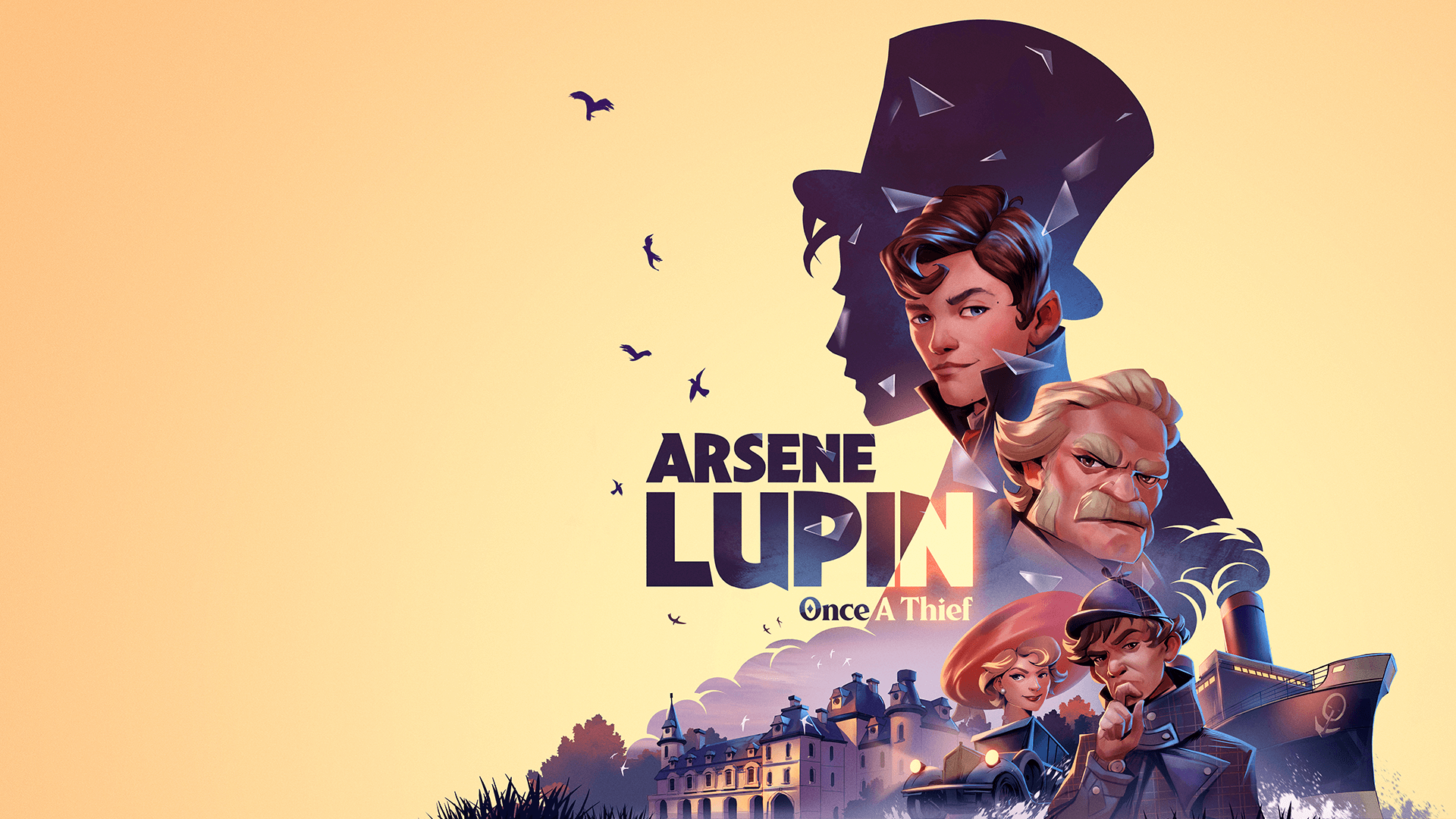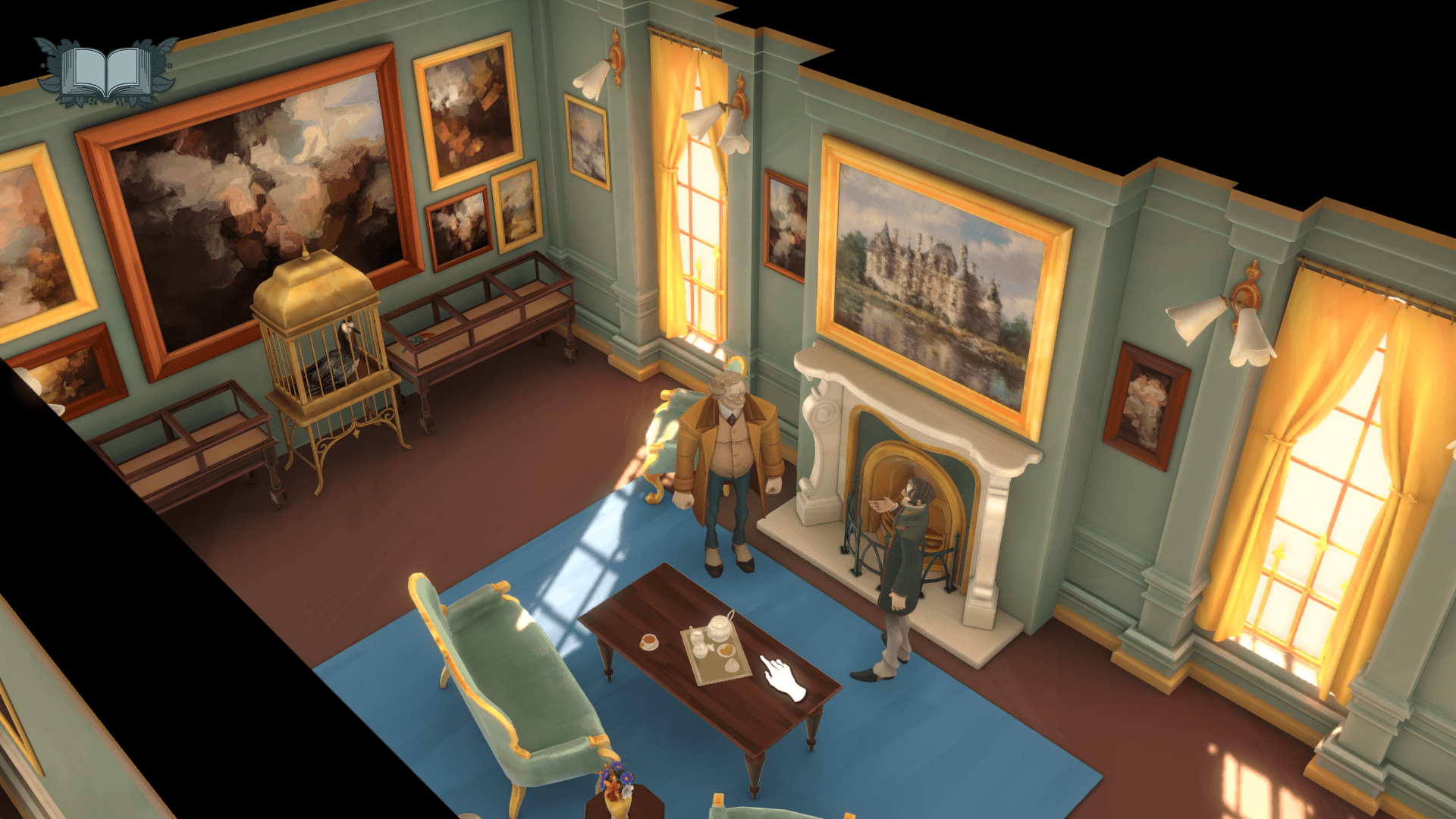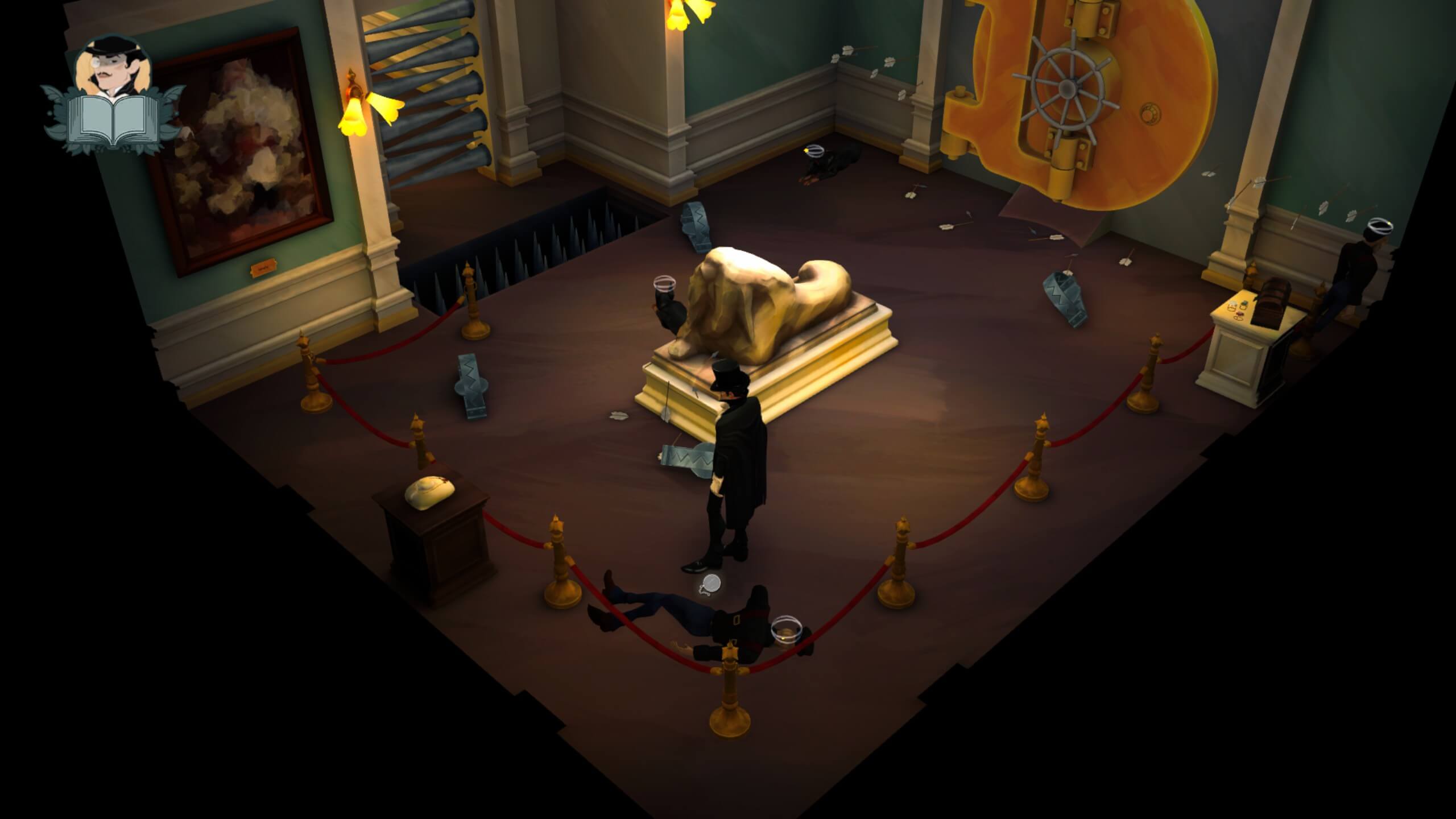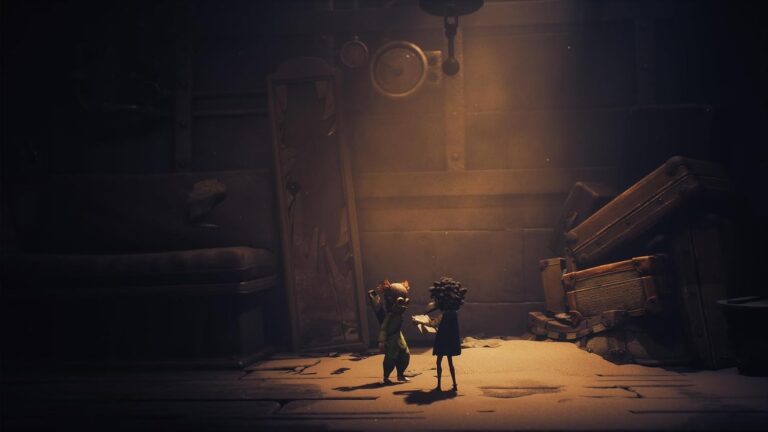
You may know Arsene Lupin by name, but few truly know the elusive French gentleman-thief from author Maurice LeBlanc’s early-1900s mysteries.
So far, the master of disguise has eluded global renown the same way he slipped the pursuit of bewildered detectives and Parisian prisons. Poirot has David Suchet. Sherlock Holmes has Benedict Cumberbatch. Arsene Lupin has no such equivalent—even the Netflix show that bears his name is about someone drawing inspiration from him, and not the character himself. He’s an enigma underneath a cape and top hat, resisting definition. As he’s often proven in the stories bearing his name, no prison cell (or actor’s talent) can capture him.
But in Arsene Lupin – Once a Thief, Blazing Griffin establishes its own take, giving the infamous burglar his first starring video game role. Neil McPhillips, Head of Games at Blazing Griffin, admits that while it was exhilarating bringing Lupin to a new medium, it was also a daunting responsibility. “If people have never read these books, our version is probably their first touchpoint for this character,” says McPhillips. “There’s a lot of pressure, but I think that’s a really cool thing to get to do.”
Adapting an enigma
After years focused on locked-room murder mysteries in Hercule Poirot: The First Cases and Hercule Poirot: The London Case—Blazing Griffin discussed the sinister craft of the whodunit with us last year—adapting Lupin’s antics entailed a major shift. The two Agatha Christie adaptations were dark and sordid affairs, confined largely to a country manor’s grounds. Arsene Lupin – Once a Thief is a lighthearted globetrotting adventure, drawing from the first collection of Lupin short stories and the lavish excesses of the Belle Époque.
McPhillips feels many Lupin adaptations fail because they forget one important detail: Lupin is fun. Lupin shouldn’t be given an inflated sense of pompous grandeur, nor should the tone be darkened to mirror the sinister plots encountered by Sherlock Holmes. Successful “adaptations” like the anime series Lupin the Third and Netflix’s Lupin show have the right idea. While pointedly not featuring Arsene Lupin himself, they emphasize the source material’s sense of mischief, with its silly disguises and bold con-artistry.

Likewise, Blazing Griffin found that a playful approach—almost pantomime in its outrageous and semi-bawdy tone—fit Lupin’s capers best. And they tackled his mysterious nature via a framing device, with Lupin recalling his earliest exploits to Maurice LeBlanc himself, arguing over the fine details by the fireplace.
“So many of the original stories are about people’s perception and the legend of Lupin,” says McPhillips. There’s the Lupin as depicted by the media, dominating headlines at his arrest or ensuing trial. There’s another Lupin who exists in fearful rumors, spread among civilians or crew members during a cruise to America.
But who is Lupin, really? Interpretations of his exploits and his true character clash, creating deliberate contradictions. You’ll never truly know him—that’s the point!
Achieving the impossible
“So many Lupin stories are just like ‘And then I just did this impossible thing,’ and everyone says ‘Of course you did, you’re Lupin!’” says McPhillips, with clear envy for LeBlanc’s deus ex machinas. “We can’t do that in a game! We have to actually show how you did those impossible things.”
The storytelling solution for these improbable exploits is “Fantasy Lupin,” whose aristocratic attire McPhillips notes is pure fabrication from the book covers, as the outfit never appears in the actual stories.
The legend of Lupin implies that each heist is plotted five years in advance. Arsene Lupin – Once a Thief uses this, putting you in the infamous criminal’s shoes for the planning phase—but his plots rarely progress as intended. A raid gone wrong demands hectic improvisation, a hasty costume assembled from ramshackle items, a makeshift tool to jimmy open a locked safe,

In order to preserve the magic of such an enduring enigma, you couldn’t spend too much time with Lupin lest his magic is dispelled by overfamiliarity. In the stories, his exploits are often seen through others’ eyes. This is mirrored in Arsene Lupin – Once a Thief, with Lupin sharing the spotlight with multiple playable characters.
After the glamor of Fantasy Lupin, chapters focus on playable characters who are trying to track him down. Like a game of Where’s Waldo, or a reverse-Hitman where you track Agent 47, Blazing Griffin’s detective gameplay comes to the fore. Reverse-engineering what happened after the heist, players return to the scene of the crime from another perspective as one of many interested parties—including several nemeses.
A tale of two detectives
McPhillips describes Detective Ganimard, first encountered on a cruise to America, as a “bull in a china shop” with his blundering-yet-obsessive pursuit of the roguish criminal. He’s doomed to never succeed, adding humiliation after humiliation to the pile. Nevertheless, his sections mark a return to the detective gameplay Blazing Griffin specializes in—detailed period-accurate locations to inspect, mind-map mechanics akin to a murder-board, and the addition of Ace Attorney-style conversation minigames.
It could be dangerous to put players in the role of a borderline-incompetent sleuth, so often outfoxed by a wily adversary, but McPhillips hopes players come to regard Ganimard with the same fondness he does. “You’re playing a bad detective, and I think that’s somewhat unique,” he says. “Normally, it’s wish fulfillment. You’re the greatest thief, you’re the greatest detective. Here it’s like, ‘No, actually, you’re not!’”

A more conventional adversary soon arises, and he’s very familiar despite an apparent attempt to remain incognito: Herlock Sholmes—not a typo but the result of an unauthorized crossover event now over a century old where Sherlock Holmes appeared in Lupin’s adventures, before a litigious Arthur Conan Doyle forced LeBlanc into adopting a hasty (and lazy) anagram.
Hypercompetent and prone to theatrical grandstanding—as anyone who saw his now out-of-copyright appearance in The Great Ace Attorney Chronicles can attest—Holmes heightens both the drama and the threat to Lupin, who is forced to devise increasingly inventive measures to escape an awaiting jail cell.
What lies beneath the top hat?
While Lupin’s tone is bright and often frivolous, McPhillips says it’s important there’s depth too, with Arsene Lupin – Once a Thief adding elements from later stories to produce a more intriguing character. Conan Doyle’s early Sherlock Holmes stories could be one-dimensional, simply unleashing a genius capable of untangling vexing problems with a determined glance. Blazing Griffin couldn’t take that risk with Lupin, so the team expanded aspects of his personality.
“There’s an implication that Lupin doesn’t exist. He’s lost. He’s forgotten who he himself is because he’s been so many different people day to day,” explains McPhillips. “We were trying to play with the player’s expectations. It wasn’t just going to be you committing hijinks in a Sly Cooper thief game. It’s more a narrative approach to this literary character.”

In addition to robbing vaults, escaping prisons, and stowing away on ships, Lupin also falls in love. The experience makes him realize he needs to be someone more, someone real, more substantial than a fleeting mystery in many disguises. This was an expansion of the original stories approved by LeBlanc’s great-granddaughter. She confirmed that hints of passion—for more than a pilfered Fabergé egg—deserved its place alongside the mystery. “There’s always a woman. That’s the rule of Lupin.”
Pick up your copy of Arsene Lupin – Once a Thief









